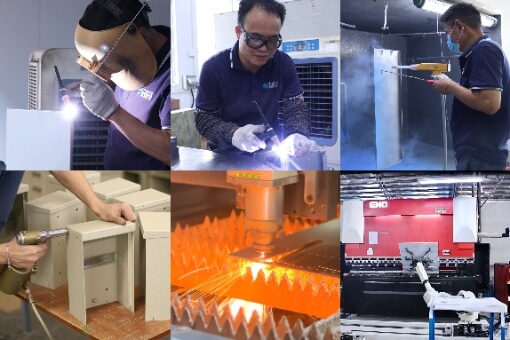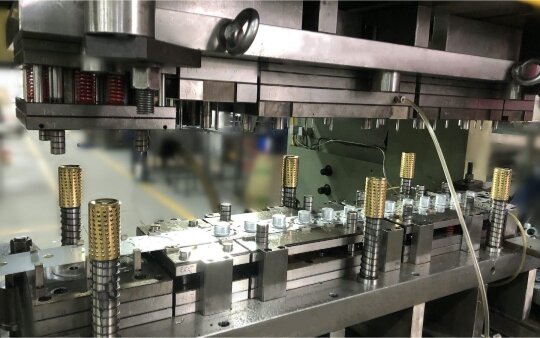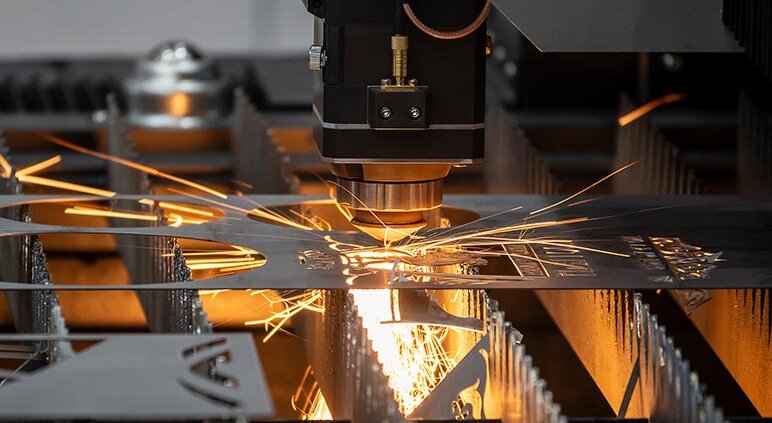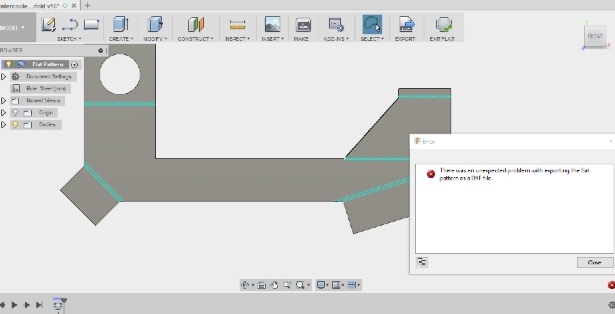يمثل تصنيع الأجزاء المعدنية المعقدة تحديات مستمرة من حيث الجودة والتكلفة والوقت. يحل الصب بالقالب المصنوع من الألومنيوم هذه المشكلات من خلال تقديم عملية موثوقة وفعالة تنتج مكونات عالية الدقة على نطاق واسع. وتوفر هذه الطريقة التي أثبتت جدواها قيمة استثنائية للمهندسين والمصنعين الذين يسعون للحصول على نتائج متسقة.
هل أنت جاهز لاستكشاف كيف يمكن لقالب الصب بالقالب من الألومنيوم أن يحول عمليات التصنيع لديك؟ يغطي هذا الدليل كل شيء بدءًا من المبادئ الأساسية إلى التطبيقات المتقدمة، مما يساعدك على اتخاذ قرارات مستنيرة لمشروعك القادم.
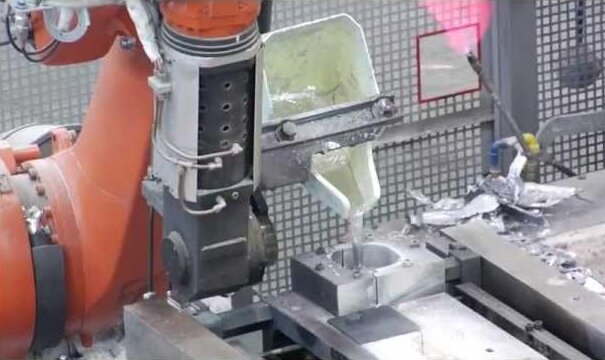
ما هو صب الألومنيوم بالقالب؟
صب الألومنيوم بالقالب هو عملية تصنيع تنتج أجزاء معدنية دقيقة وسلسة. وتتضمن حقن الألومنيوم المنصهر في قالب تحت ضغط عالٍ، مما يسمح للمعدن باتخاذ شكل القالب.
تشتهر هذه العملية بصنع أجزاء ذات مقاومة ممتازة للتآكل وموصلية عالية. كما يوفر قالب الصب بالقالب المصنوع من الألومنيوم نسبة قوة إلى الوزن قوية، مما يجعله مثاليًا للمكونات خفيفة الوزن والمتينة في الوقت نفسه. كما أنها تسمح بالإنتاج السريع وفعالة من حيث التكلفة، خاصةً في عمليات الإنتاج بكميات كبيرة.
عملية الصب بالقالب الألومنيوم
تتبع عملية الصب بالقالب تسلسل دقيق من الخطوات التي تحول الألومنيوم الخام إلى مكونات نهائية. دعونا نفصل كل خطوة منها:
الخطوة 1: تحضير القالب
تبدأ العملية بإعداد القالب، الذي يتكون من نصفين يشكلان القالب للقطعة. وعادةً ما تكون هذه القوالب مصنوعة من الفولاذ عالي القوة لتحمل ضغط ودرجة حرارة الألومنيوم المصهور.
الخطوة 2: صهر وحقن الألومنيوم
بمجرد أن يصبح القالب جاهزًا، يتم صهر الألومنيوم في فرن. ثم يتم حقن الألومنيوم المنصهر في القالب بضغط عالٍ.
الخطوة 3: التبريد والتصلب
بعد الحقن، يبرد الألومنيوم المنصهر ويتصلب داخل القالب. يعتمد وقت التبريد على سُمك الجزء، ولكنه يحدث عادةً بسرعة بسبب نظام تبريد القالب.
الخطوة 4: إخراج الجبيرة
بمجرد أن يتصلب الجزء، يتم فصل نصفي القالب، ويتم إخراج الجزء. يتم ذلك بعناية لتجنب إتلاف المكون المشكل حديثًا.
الخطوة 5: عمليات ما بعد الصب (إزالة الأزيز, المعالجة السطحية)
بعد الطرد، قد يحتاج الجزء إلى خطوات تشطيب إضافية. يمكن أن يشمل ذلك إزالة أي مواد زائدة، تسمى الوميض، التي تكونت حول حواف الجزء.
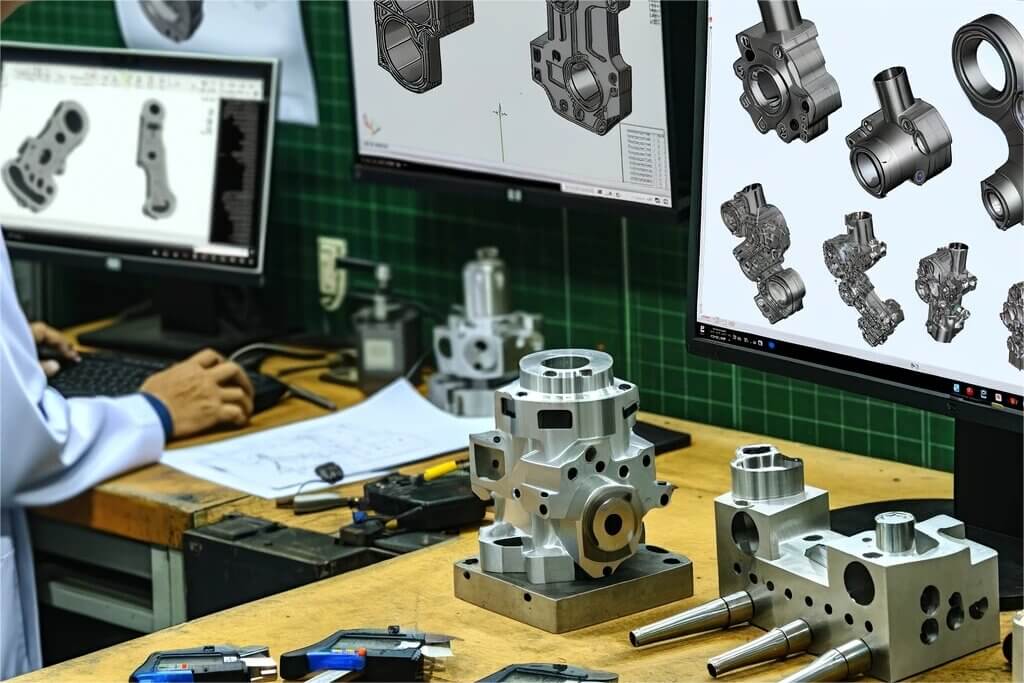
أنواع قوالب الألومنيوم المصبوبة بالقالب
إن لقالب الصب بالقالب المصنوع من الألومنيوم العديد من الأشكال، كل منها مصمم خصيصًا لتلبية احتياجات التصنيع المحددة. تختلف هذه الطرق في كيفية إدخال الألومنيوم المصهور في القالب والظروف التي يتصلب فيها.
الصب بالقالب عالي الضغط
تتضمن تقنية HPDC حقن الألومنيوم المصهور في قالب فولاذي تحت ضغط شديد، يتراوح عادةً بين 10000 و25400 رطل لكل بوصة مربعة. وتعتبر هذه الطريقة مثالية لإنتاج أشكال معقدة ذات تفاوتات ضيقة وتشطيبات سطحية ناعمة.
الصب بالقالب منخفض الضغط
يستخدم LPDC الضغط المنخفض المتحكم فيه لملء تجويف القالب بالألومنيوم المصهور، مما يضمن ملء متسق ودقيق. تقلل هذه الطريقة من المسامية، وهي مناسبة بشكل خاص لصنع مكونات متناظرة مثل العجلات أو الأجزاء الهيكلية.
الصب بالقالب المفرغ من الهواء
يطبق الصب بالقالب بالتفريغ تفريغ الهواء على تجويف القالب، مما يسحب الألومنيوم المصهور إلى القالب. تقلل هذه العملية من انحباس الهواء والمسامية، مما ينتج عنه مصبوبات أكثر كثافة وأعلى جودة.
ضغط القوالب المصبوبة بالقالب
يجمع الصب بالقالب بالضغط بين عناصر التشكيل والصب عن طريق الضغط العالي أثناء التصلب. هذه الطريقة تزيل المسامية وتعزز الخواص الميكانيكية وتنتج أجزاء ذات قوة ومتانة استثنائية.
مزايا صب الألومنيوم بالقالب
يوفر قالب الصب بالقالب المصنوع من الألومنيوم العديد من المزايا، مما يجعله خيارًا شائعًا للمصنعين. وفيما يلي أهم المزايا:
منتجات خفيفة الوزن وقوية
يُنتج الألومنيوم المصبوب بالقالب قطعاً خفيفة الوزن وقوية في نفس الوقت. إن الخصائص الطبيعية للألومنيوم تجعله مثاليًا للتطبيقات في صناعات مثل السيارات والفضاء، حيث يكون تقليل الوزن أمرًا ضروريًا لتحسين الأداء.
الفعالية من حيث التكلفة
يُعد صب الألومنيوم بالقالب خيارًا فعالاً من حيث التكلفة للإنتاج على نطاق واسع. وعلى الرغم من أن تكاليف الأدوات قد تكون مرتفعة في البداية، إلا أن العملية الفعالة تسمح بإنتاج كميات كبيرة وسريعة مما يخفض سعر الوحدة.
دقة أبعاد فائقة
تضمن عملية الحقن عالية الضغط دقة ممتازة. تنتج قوالب الصب بالقالب المصنوعة من الألومنيوم قطعًا ذات تفاوتات ضيقة وأبعاد متناسقة، مما يقلل من الحاجة إلى عمليات تصنيع إضافية.
تبديد الحرارة المحسّن
يتميز الألومنيوم بتوصيل حراري ممتاز، مما يجعله مثاليًا للتطبيقات الحساسة للحرارة. تعمل الأجزاء المصبوبة بالقالب على تبديد الحرارة بشكل فعال، وهو أمر ضروري لصناعات مثل الإلكترونيات والسيارات.
الأشكال الهندسية المعقدة والتصاميم المعقدة
يمكن لقالب الصب بالقالب المصنوع من الألومنيوم إنتاج أجزاء ذات أشكال معقدة وخصائص معقدة. وتسمح هذه العملية بتصميمات تفصيلية وجدران رقيقة وأشكال هندسية معقدة قد تكون صعبة مع طرق التصنيع الأخرى.
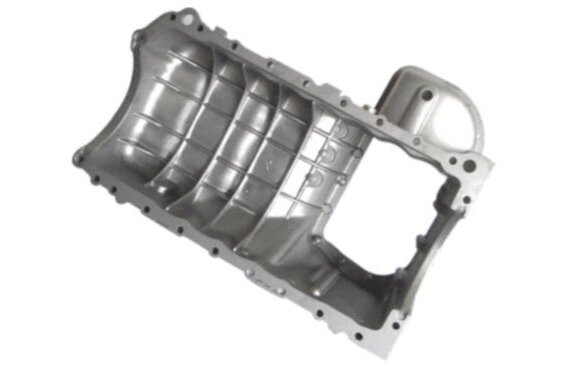
التحديات في صب الألومنيوم بالقالب
في حين أن عملية الصب بالقالب من الألومنيوم توفر العديد من المزايا، إلا أنها تقدم أيضًا العديد من التحديات التي يجب على المصنعين التغلب عليها لضمان إنتاج عالي الجودة. فيما يلي بعض المشكلات الأكثر شيوعًا التي تواجهها العملية:
مشكلات المسامية
تحدث المسامية عندما تنحصر الغازات، مثل الهواء أو الهيدروجين، في الألومنيوم المصهور أثناء الصب. وينتج عن ذلك فراغات داخلية أو عيوب سطحية يمكن أن تقلل من القوة الميكانيكية وضيق الضغط والجودة.
تشمل الحلول تحسين تصميم القالب، وتحسين أنظمة التنفيس، وتنقية السبيكة لتقليل احتباس الغازات.
العيوب السطحية والشوائب السطحية
غالبًا ما تنشأ عيوب السطح مثل البثور والشوائب والتشطيبات الخشنة من الشوائب في الألومنيوم المصهور أو سوء صيانة القالب. هذه العيوب تضعف الصب ويمكن أن تؤثر على جودته الجمالية.
من الضروري تنظيف القوالب جيدًا، ومعالجة السبيكة بشكل صحيح، والحفاظ على درجات حرارة ثابتة للقوالب لمنع حدوثها.
التكسير الساخن
يحدث التشقق الساخن (أو التمزق الساخن) أثناء المراحل النهائية من التصلب عندما يكون الصب لا يزال شبه صلب. ويحدث ذلك بسبب الانكماش الحراري غير المتساوي أو تركيز الضغط في نقاط الضعف في الصب.
ولمنع التشقق الساخن، يجب على المصنعين ضمان سمك موحد للجدار، وتجنب الزوايا الحادة في التصميمات، والتحكم في معدل التبريد أثناء التصلب.
ما هو أفضل صب للألومنيوم؟
تعتمد أفضل سبائك الألومنيوم لصب القوالب على التطبيق المحدد. ومع ذلك، فإن سبيكة A380 هي السبيكة الأكثر استخدامًا نظرًا لتوازنها الممتاز بين قابلية الصب والمتانة والفعالية من حيث التكلفة. فهي توفر سيولة جيدة، وموصلية حرارية، ومقاومة للتشقق الساخن، مما يجعلها مثالية للتصاميم المعقدة والتطبيقات ذات الجدران الرقيقة.
تشمل السبائك البارزة الأخرى ما يلي:
- A360: معروف بمقاومته الفائقة للتآكل وضيق الضغط، ومناسب للبيئات ذات درجات الحرارة العالية أو البيئات القاسية.
- A383 (ADC12): يوفر خصائص تعبئة أفضل في درجات حرارة منخفضة، وهو مثالي للأشكال المعقدة والتصاميم التفصيلية.
- A356: شائع في التطبيقات الفضائية والصناعية لقابليته للحام ومتانته.
التطبيقات الشائعة لصب الألومنيوم بالقالب
يستخدم صب الألومنيوم بالقالب على نطاق واسع في مختلف الصناعات لأنه ينتج مكونات خفيفة الوزن ومتينة ومعقدة بدقة عالية. فيما يلي بعض تطبيقاته الأكثر شيوعًا:
صناعة السيارات:
- كتل المحرك
- علب ناقل الحركة
- العجلات
- مركبات اساسيه
الطيران والفضاء:
- اجزاء المحرك
- هياكل الجناح
- معدات الهبوط
مستهلكى الكترونيات:
- أغلفة الهواتف الذكية
- هيكل الكمبيوتر المحمول
- بالوعة الحرارة
- علب الكاميرات
المعدات الصناعية:
- المساكن
- اقواس
- التروس
أجهزة طبية:
- أجزاء الماسح الضوئي بالرنين المغناطيسي
- أغلفة معدات الموجات فوق الصوتية
- الأدوات الجراحية
- مكونات مضخة الأكسجين المحمولة
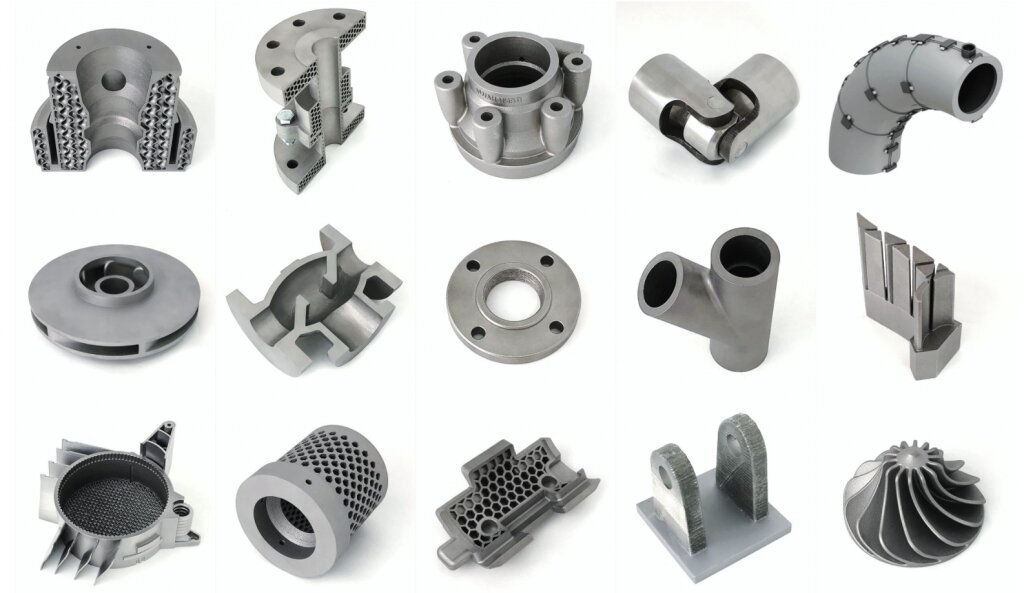
بدائل الصب بالقالب - الصب بالرمل والصب الاستثماري
عندما لا يكون الصب بالقالب هو الأمثل، يظهر الصب بالرمل والصب الاستثماري كبدائل قابلة للتطبيق. تقدم كل طريقة مزايا فريدة ومناسبة لتطبيقات محددة.
صب الرمل
يتضمن الصب بالرمل إنشاء قالب من الرمل لصب المعدن المنصهر. هذه العملية متعددة الاستخدامات وفعالة من حيث التكلفة لأحجام الإنتاج المنخفضة إلى المتوسطة.
مزايا الصب بالرمل:
- انخفاض تكاليف الأدوات: مثالية للنماذج الأولية أو عمليات الإنتاج الصغيرة بسبب القوالب غير المكلفة.
- تنوع المواد: يعمل مع أي سبيكة حديدية أو غير حديدية تقريبًا.
- مرونة الحجم: يمكن إنتاج أجزاء تتراوح من بضع أونصات إلى أكثر من 200 طن.
صب الاستثمار
يستخدم الصب الاستثماري نمط شمع مغطى بالسيراميك لإنشاء قالب. يتم صهر الشمع وصب المعدن المنصهر في القالب الخزفي للحصول على مكونات عالية الدقة.
مزايا الصب الاستثماري:
- التفاوتات الضيقة: تُنتج قِطَعًا بدقة أبعاد ممتازة وأقل احتياجات تصنيع آلي.
- الهندسات المعقدة: قادرة على إنشاء تصميمات معقدة دون صياغة الزوايا.
- لمسة نهائية فائقة للسطح: يوفر تشطيبات أكثر سلاسة من الصب بالرمل أو الصب بالقالب.
خاتمة
يوفر قالب الصب بالقالب المصنوع من الألومنيوم حلاً متعدد الاستخدامات وفعالاً من حيث التكلفة لتصنيع أجزاء عالية الجودة في مختلف الصناعات. وتشمل مزاياه قوة الوزن الخفيف ودقة الأبعاد الفائقة والقدرة على إنتاج أشكال هندسية معقدة.
سواء كنت بحاجة إلى مكونات السيارات، أو قطع غيار الطائرات، أو علب الإلكترونيات الاستهلاكية، فإن قوالب الألومنيوم المصبوبة توفر الأداء والدقة المطلوبة للتطبيقات الصعبة.
هل أنت مستعد لاستكشاف كيف يمكن لقالب الصب بالقالب من الألومنيوم أن يفيد مشروعك القادم؟ اتصل بنا اليوم للحصول على استشارة مجانية وعرض أسعار مجاني.
مهلا، أنا كيفن لي

على مدى السنوات العشر الماضية، كنت منغمسًا في أشكال مختلفة من تصنيع الصفائح المعدنية، وشاركت رؤى رائعة هنا من تجاربي عبر ورش العمل المتنوعة.
ابقى على تواصل

كيفن لي
لدي أكثر من عشر سنوات من الخبرة المهنية في تصنيع الصفائح المعدنية، وتخصصت في القطع بالليزر، والثني، واللحام، وتقنيات معالجة الأسطح. كمدير فني في شنغن، أنا ملتزم بحل تحديات التصنيع المعقدة ودفع الابتكار والجودة في كل مشروع.

